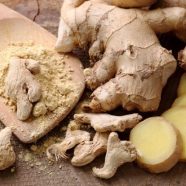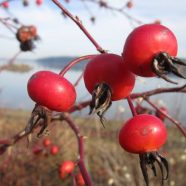Ginger
I know, you can’t find tropical ginger wild in the Pacific Northwest, but I can’t resist writing about my favorite winter plant companion. It is easily gathered from our most common harvesting ground – the local grocery. And ginger’s warm and stimulating disposition makes our cold, damp winters almost bearable. My grandma Betty loved ginger. Whenever I had a cold or an upset stomach, she made me a tea with ginger, honey, and lemon. I still remember how that comforting brew, coupled with her grandmotherly love, could make even my deepest woes dissipate. Ginger has been a life-long...
Read MoreWinter’s Stillness
Winter is here. The business of the holidays is behind us. I breathe a sigh of relief, hallelujah. Finally I can fulfill my instinct to be still and contemplative. After all, that is what is happening outside. Around us nature has turned inward and is drawing on reserves. Squirrels savor buried nuts. Deer move slowly and sleep in downy beds. Little birds huddle together for warmth. Plants carefully draw nutrients from roots fattened by summers’ photosynthesis. Winter is the time of survival and endurance. But it is also the time of mystery. Deep in the earth, seeds are still, but there...
Read MoreRosehips
Rose hips glow like rubies in the fading colors of autumn. They are red to orange colored, round and fleshy – pregnant with a belly of seeds. These tiny jewels bestow a wealth of medicine to those who take time to harvest them. They are easy to dry in baskets or paper bags. Make them into a delicious tea that is rich in vitamins, minerals and antioxidants. Identifying and Using Rosehips Most rose plants have hips that are useable including all of our northwest native roses, rugosa rose, cabbage roses, and heirloom varieties. Avoid gathering rosehips from plants that have been treated with...
Read MoreAutumn is the Season of Letting Go
As I stand in the forest under a cathedral of Douglas fir and gentle arches of Big Leaf Maple, I am bathed in autumn light. It is a long light full of deep shadows. Hues of gold, red, and brown glow against the dark green of sword fern and Oregon grape. The air seems clearer now than it did in summer and my senses are heightened. With a deep exhalation I settle into listening. Not just listening with my ears but with my whole body. Crows talk raucously. A winter wren sings on its low salmonberry perch. The soft mosses on a nurse log sway like anemones in a gentle current of wind. A maple...
Read MoreBlue Elder
Elder is called “the medicine chest of the country people” – a pharmacy in and of itself. Today, elder flowers and berries are most prized for alleviating symptoms of colds and the flu. Historically, every part of the plant was highly valued and utilized, often commanding mythic status. Other Names: TsiqWi’qWay (Twana) Blue elderberry Sambucus cerulea. Identifying Blue Elder: Elder is a small tree that grows up to 20 feet high. Each leaf has five to nine opposite leaflets with serrated edges. Tiny star-shaped flowers are whitish-yellow and grow in dense flat shaped clusters. They bloom in...
Read MoreSalal
Ever-green, basic food, plant of perseverance. Salal, a backdrop in Northwest woodlands, is so common that many people barely notice it. Its shiny deep-green leaves remain beautiful all year. Stems are long-lasting when cut and are a valued addition to floral arrangements. This mirrors salal berry’s qualities as a powerful preservative. They are loaded with vitamins and antioxidants that prevent degeneration and help us to live a long and sustaining life. Other Names: sala’xbupt, Makah. Gaultheria shallon Identifying Salal: Salal is an evergreen shrub that grows in lush thickets in both...
Read More







